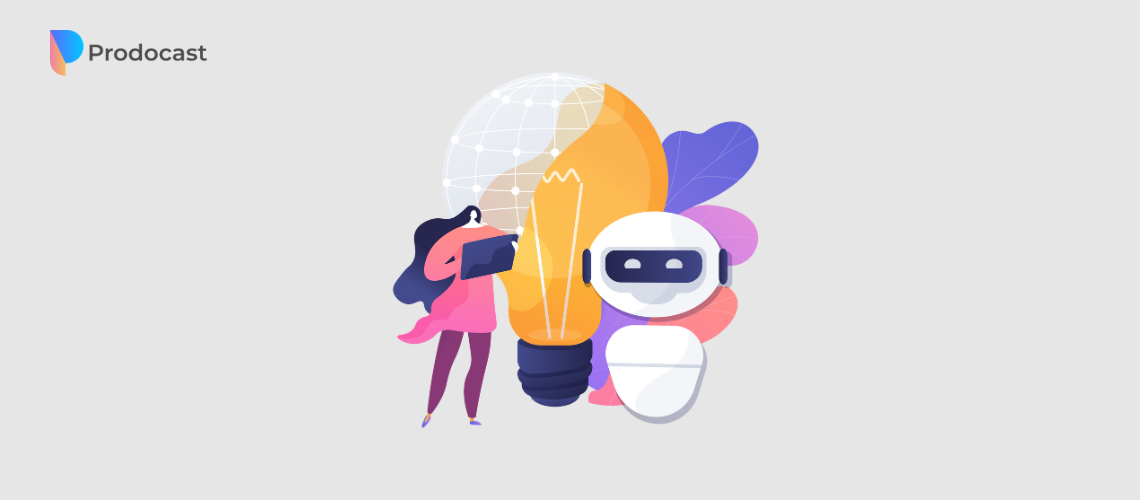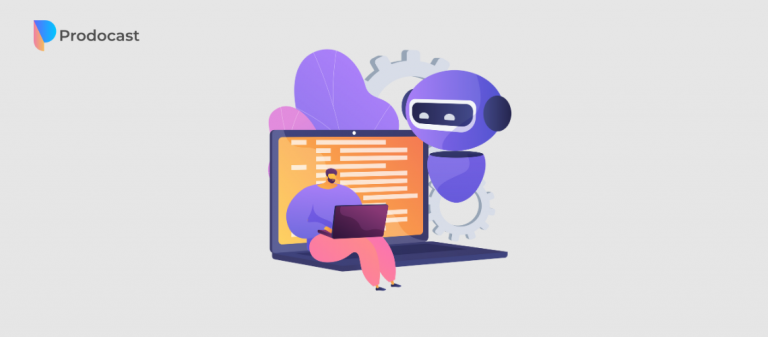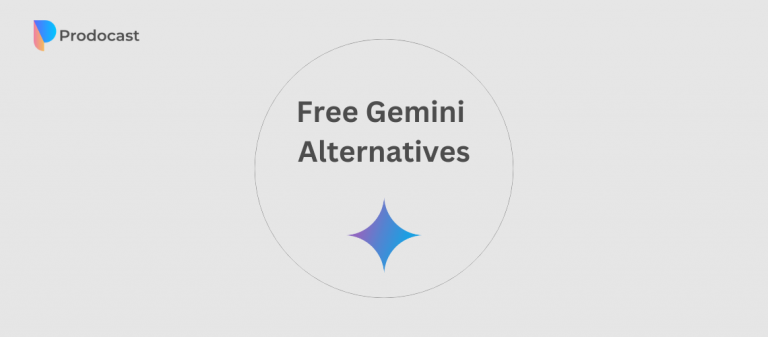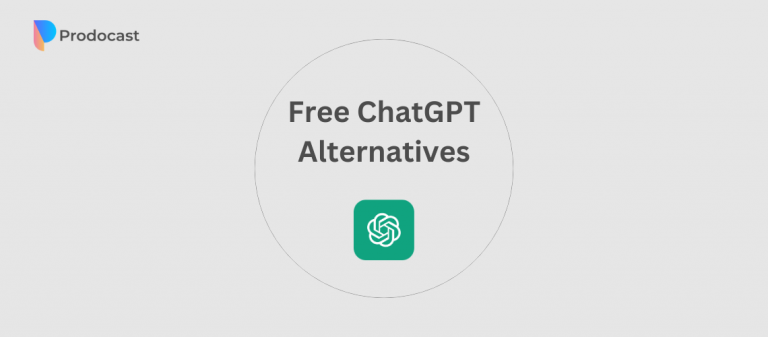In the ever-evolving landscape of content creation, technological advancements continue to reshape the way stories are told. Artificial Intelligence (AI) tools have emerged as powerful allies for writers, filmmakers, marketers, and businesses, revolutionizing the process of content creation. This transformation is not just about automating tasks; it’s about enhancing creativity, improving efficiency, and unlocking new possibilities. In this comprehensive exploration, we will delve into the profound impact of AI tools on modern storytelling, covering their benefits, challenges, and the future they promise.
How AI is Changing the Story
AI is fundamentally transforming the landscape of storytelling by enhancing various aspects of the narrative process, bringing efficiency, creativity, and personalization to new heights. Here’s a closer look at the profound impacts AI is having on modern storytelling.
Enhancing Creativity and Overcoming Writer’s Block
One of the most significant impacts of AI on storytelling is its ability to enhance creativity. AI can generate a multitude of ideas and provide starting points for stories, which helps creators overcome writer’s block. By analyzing vast amounts of data, AI can suggest themes, plot twists, and character developments that a human writer might not have considered. This infusion of fresh ideas can lead to more innovative and engaging narratives.
Streamlining Content Creation
AI significantly streamlines the content creation process. Tasks that once took hours, such as researching, drafting, and editing, can now be accomplished in a fraction of the time. AI can quickly sift through large datasets to find relevant information, generate initial drafts, and even suggest revisions. This efficiency allows creators to focus more on the creative aspects of storytelling, rather than getting bogged down by tedious tasks.
Personalizing Content for Diverse Audiences
One of the most revolutionary impacts of AI is its ability to personalize content for different audiences. By analyzing user data, AI can identify audience preferences and tailor stories to match these interests. This personalization can occur in real-time, allowing for dynamic storytelling that adapts to the reader’s choices and behaviors. Such personalized experiences can significantly enhance engagement and retention.
Enhancing Audience Insights
AI provides deep insights into audience behavior and preferences, enabling content creators to understand what resonates with their target audience. By analyzing patterns in user engagement, AI can identify which types of content are most effective. These insights help creators refine their storytelling techniques and strategies to better meet the needs and interests of their audience, ultimately leading to more impactful and successful content.
Creating Interactive and Immersive Experiences
AI is pushing the boundaries of traditional storytelling by enabling the creation of interactive and immersive experiences. For instance, AI can power choose-your-own-adventure narratives, where the story changes based on the reader’s decisions. This level of interactivity engages the audience in a way that static narratives cannot, providing a more immersive and engaging experience.
Enhancing SEO and Content Discoverability
In the digital age, discoverability is key to successful storytelling. AI enhances search engine optimization (SEO) by analyzing trends, keywords, and audience behavior to optimize content for search engines. This ensures that stories reach a broader audience and achieve higher visibility online. By leveraging AI, creators can make data-driven decisions that enhance the reach and impact of their content.
Automating Mundane Tasks
AI automates many of the mundane tasks associated with content creation, such as proofreading, fact-checking, and formatting. This automation not only saves time but also reduces the risk of errors. By handling these repetitive tasks, AI allows creators to devote more energy to crafting compelling and engaging narratives.
Facilitating Multilingual Content Creation
With globalization, creating content that can reach a global audience is increasingly important. AI-powered translation tools facilitate the creation of multilingual content, enabling stories to transcend language barriers. This capability allows creators to share their narratives with a wider audience, fostering greater inclusivity and accessibility.
Enhancing Visual Storytelling
In addition to textual content, AI is revolutionizing visual storytelling. By analyzing visual data, AI can assist in creating more compelling and aesthetically pleasing visuals. This includes everything from generating realistic images and animations to enhancing video content with automated editing tools. These advancements allow creators to produce high-quality visual content that complements and enhances their narratives.
The Rise of AI Storytelling Tools
As AI technology advances, a plethora of tools have emerged that are transforming the landscape of content creation. These tools cater to various aspects of the creative process, from generating text and visual content to analyzing audience data and enhancing SEO. Here are some of the most notable AI tools that are revolutionizing content creation:
AI-Powered Copywriting and Content Generation Tools
-
OpenAI’s GPT-4
-
-
- Overview: GPT-4, developed by OpenAI, is one of the most advanced language models available. It can generate human-like text, making it a valuable tool for writers and marketers.
- Features: GPT-4 can create articles, blog posts, social media content, and more. It can also assist with brainstorming ideas, drafting outlines, and refining text.
- Impact: This tool helps overcome writer’s block, speeds up content creation, and enhances creativity by providing diverse perspectives and ideas.
-
-
Jasper (formerly Jarvis)
-
-
- Overview: Jasper is an AI writing assistant designed to help with various types of content, including marketing copy, blog posts, and product descriptions.
- Features: It offers templates for different content formats, provides content suggestions, and optimizes text for SEO.
- Impact: Jasper streamlines the writing process, ensuring high-quality, engaging, and SEO-friendly content.
-
-
- Overview: Copy.ai is another AI-driven writing tool that focuses on generating marketing copy and creative content.
- Features: It provides a range of tools for creating blog posts, social media content, email newsletters, and ad copy.
- Impact: Copy.ai enhances productivity by automating content generation and offering creative solutions for various writing needs.
AI-Driven Story Planning and Development Tools
-
Plotagon
-
-
- Overview: Plotagon is an AI tool designed for scriptwriters and storytellers, allowing them to create animated stories and characters.
- Features: Users can write scripts, develop characters, and generate animations based on their stories.
- Impact: Plotagon makes storytelling more interactive and visually engaging, providing a unique way to bring stories to life.
-
-
Scrivener with AI Integration
-
-
- Overview: Scrivener is a popular writing software that, when integrated with AI tools, enhances the story development process.
- Features: AI integration can assist with brainstorming, outlining, character development, and dialogue generation.
- Impact: This combination streamlines the writing process and provides new insights, making it easier for writers to organize and develop their narratives.
-
-
ChatGPT for Character and Dialogue Development
-
- Overview: ChatGPT, another tool by OpenAI, can simulate conversations and generate dialogue for characters.
- Features: Writers can use ChatGPT to create realistic and varied dialogue, helping to develop complex characters and interactions.
- Impact: This tool enhances character development and dialogue writing, making stories more authentic and engaging.
AI-Powered Multimedia Tools
-
DALL-E 2
-
-
- Overview: Developed by OpenAI, DALL-E 2 is an AI tool that generates images from textual descriptions.
- Features: It can create highly detailed and imaginative visuals based on prompts provided by the user.
- Impact: DALL-E 2 enables creators to produce unique and custom images for their stories, enhancing the visual component of storytelling.
-
-
Lumen5
-
-
- Overview: Lumen5 is an AI video creation platform that transforms text content into engaging video stories.
- Features: It uses AI to automate video creation, suggesting images, video clips, and music that match the text content.
- Impact: Lumen5 simplifies video production, making it accessible for creators to produce high-quality video content without extensive resources.
-
-
AIVA (Artificial Intelligence Virtual Artist)
-
- Overview: AIVA is an AI composer that creates original music and soundtracks for various types of media.
- Features: It can compose music in different genres and styles, tailored to the specific needs of a project.
- Impact: AIVA allows creators to enhance their storytelling with custom soundtracks, adding an emotional and immersive layer to their content.
AI for Data Analysis and SEO Optimization
-
Frase
-
-
- Overview: Frase is an AI-powered content optimization tool that helps creators enhance their SEO strategies.
- Features: It provides insights into high-ranking content, suggests keywords, and offers recommendations for improving content relevance and readability.
- Impact: Frase ensures that content is optimized for search engines, increasing visibility and attracting a larger audience.
-
-
MarketMuse
-
-
- Overview: MarketMuse uses AI to analyze content and provide data-driven recommendations for improving SEO and content strategy.
- Features: It offers insights into content gaps, competitive analysis, and keyword optimization.
- Impact: MarketMuse helps creators develop comprehensive content strategies that align with audience interests and search engine algorithms.
-
-
BrightEdge
-
- Overview: BrightEdge is an AI-driven SEO platform that provides actionable insights for content optimization.
- Features: It includes tools for keyword research, performance tracking, and competitive analysis.
- Impact: BrightEdge enables creators to optimize their content for maximum reach and engagement, ensuring that it ranks well on search engines.
Benefits vs. Drawbacks: A Balanced Viewpoint
While AI tools offer numerous benefits, they also present certain challenges and ethical considerations. Understanding the balance between human creativity and AI assistance is crucial for effective storytelling.
Benefits of AI in Storytelling
Enhanced Creativity
AI can suggest new ideas, plot twists, and character developments that writers might not have considered, fostering a more collaborative and innovative creative process. By providing alternative perspectives and solutions, AI can help writers break through creative blocks and explore new narrative possibilities.
Improved Efficiency
AI tools can automate time-consuming tasks like research, drafting, and editing, allowing writers to focus on refining their stories and adding a personal touch. This increased efficiency can lead to higher productivity and quicker turnaround times, benefiting both individual creators and businesses.
Data-Driven Insights
AI can analyze audience data to provide insights that inform content creation, ensuring stories are relevant and engaging. By understanding audience preferences and trends, creators can tailor their narratives to resonate with their target audience, resulting in higher engagement and satisfaction.
Consistency and Accuracy
AI tools help maintain consistency in tone, style, and accuracy, which is particularly valuable for large-scale content production. Whether it’s ensuring character continuity in a series or maintaining a consistent voice across multiple marketing materials, AI can help uphold high standards of quality.
Multilingual Capabilities
AI-powered translation and localization tools enable writers to create content that is culturally relevant and linguistically accurate, expanding their reach to global audiences. By providing high-quality translations and adapting content to different cultural contexts, AI can help creators connect with diverse audiences worldwide.
Drawbacks of AI in Storytelling
While AI tools offer numerous benefits, they also present certain challenges and ethical considerations that need to be addressed:
Expression Challenges
One drawback of AI in storytelling is its difficulty in capturing nuances like humor, irony, and cultural context. AI excels at data-driven content creation but may struggle with the subtleties of human expression, potentially leading to narratives that lack the depth and cultural sensitivity of human-authored stories.
Quality Control
AI-generated content is only as good as the data it has been trained on. Ensuring the quality and accuracy of AI-generated content requires human oversight. Writers and editors must review and refine the output to maintain high standards.
Originality and Plagiarism
AI tools can sometimes produce content that closely resembles existing works, raising concerns about originality and plagiarism. It’s essential for writers to use AI-generated content as a starting point and infuse their unique voice and creativity into the final product.
Dependency and Skill Development
Over-reliance on AI tools can potentially hinder the development of writing skills. It’s important for writers to strike a balance between using AI for efficiency and continuing to hone their craft through practice and learning.
The Human-AI Collaboration
While AI tools offer significant advantages, the human element in storytelling remains irreplaceable. The most effective use of AI is in collaboration with human creativity, critical thinking, and emotional intelligence.
Highlighting Human Creativity
Human creativity is the driving force behind compelling stories. It involves intuition, empathy, and a deep understanding of the human condition. AI can enhance this creativity by providing new ideas and perspectives, but it cannot replace the nuanced insights and emotional depth that human writers bring to their work.
AI as a Tool to Enhance Creativity
It is best used as a tool to augment human creativity, not replace it. Writers can leverage AI to streamline their workflow, generate new ideas, and gain insights from data analysis. However, the final narrative should always be shaped and refined by human hands to ensure it resonates on a deeply emotional level.
Importance of Human Oversight
Human oversight and editorial control are crucial when using AI-generated content. Writers and editors must review and refine AI-generated material to ensure it aligns with their creative vision and maintains high standards of quality. This collaborative approach ensures that the final product reflects the unique voice and perspective of the creator.
Case Studies
Case Study 1: The Washington Post’s Heliograf
Overview
In 2016, The Washington Post introduced Heliograf, an AI-powered tool designed to assist in content creation, particularly for covering breaking news, sports updates, and election results. Heliograf’s primary function is to automatically generate short news articles based on data inputs.
Implementation
Heliograf was programmed to interpret structured data from sources such as election results, sports scores, and financial reports. It could then produce coherent and timely news updates. For example, during the 2016 Summer Olympics and the U.S. presidential election, Heliograf generated articles and social media updates based on real-time data.
Impact
- Increased Efficiency: Heliograf significantly reduced the time required to produce short news updates, allowing human journalists to focus on more in-depth reporting and analysis.
- Expanded Coverage: The Washington Post was able to cover more events and topics without additional staff, as Heliograf could generate numerous articles quickly.
- Enhanced Audience Engagement: The timely updates provided by Heliograf kept readers informed about breaking news, contributing to increased traffic and engagement on the Washington Post’s digital platforms.
Insights
Heliograf’s success demonstrates how AI can be integrated into newsrooms to handle routine reporting tasks, thereby enhancing overall journalistic productivity and coverage.
Case Study 2: Earnings reports of Associated Press
Overview
Automated Insights, a company specializing in natural language generation, partnered with the Associated Press (AP) to produce earnings reports. This collaboration aimed to automate the creation of quarterly earnings stories for thousands of companies, a task that was previously labor-intensive.
Implementation
Using Automated Insights’ Wordsmith platform, the AP was able to input financial data and generate earnings reports in a matter of seconds. The AI analyzed the data, applied natural language processing, and produced written reports that adhered to AP’s editorial standards.
Impact
- Scalability: The AP increased its coverage from 300 to 3,000 quarterly earnings reports, providing more comprehensive financial news coverage.
- Consistency and Accuracy: The AI-generated reports maintained a consistent style and reduced the risk of human error in data interpretation and reporting.
- Resource Allocation: Journalists were freed from routine reporting tasks and could focus on more complex and investigative stories.
Insights
This case study highlights the potential of AI to scale content production and improve the accuracy and consistency of data-driven reporting.
Case Study 3: Netflix’s AI-Driven Content Personalization
Overview
Netflix has been leveraging AI and machine learning to personalize content recommendations for its users. By analyzing viewing habits, preferences, and interactions, Netflix’s AI algorithms can suggest movies and TV shows that align with individual tastes.
Implementation
Netflix’s recommendation system uses a combination of collaborative filtering, content-based filtering, and deep learning techniques to analyze user behavior and content attributes. This multi-faceted approach allows the platform to deliver highly personalized recommendations to each user.
Impact
- Increased Viewer Engagement: Personalized recommendations have led to higher user satisfaction and increased viewing times, as users are more likely to discover content they enjoy.
- Reduced Churn Rate: By continuously offering relevant content, Netflix has managed to retain subscribers and reduce the churn rate.
- Content Creation Insights: The data collected and analyzed by AI also informs Netflix’s original content production, helping the company invest in shows and movies that are likely to be successful with their audience.
Insights
Netflix’s use of AI for content personalization exemplifies how AI can enhance user experience and inform strategic decisions in content creation and distribution.
The Future of Storytelling
The future of storytelling is poised to be profoundly influenced by advancements in AI technology. Here are some potential developments and considerations:
Advancements in AI Capabilities
As AI technology continues to evolve, we can expect more sophisticated tools that offer greater creative assistance. Future AI systems may be capable of generating even more nuanced and emotionally resonant content, pushing the boundaries of what is possible in storytelling.
Integration with Virtual and Augmented Reality
AI’s role in virtual and augmented reality storytelling is set to expand. AI can assist in creating immersive environments, generating interactive narratives, and personalizing experiences for users. This integration will open new frontiers for storytelling, enabling creators to craft dynamic and engaging experiences that transcend traditional mediums.
Ethical Considerations and Guidelines
As AI becomes more integrated into content creation, ethical considerations will become increasingly important. Industry guidelines and best practices will need to be developed to ensure responsible and transparent use of AI in storytelling. Addressing issues of bias, authorship, and accountability will be crucial for maintaining the integrity of AI-generated content.
The Human Touch
Despite technological advancements, the human touch will remain essential in storytelling. The unique perspectives, emotions, and creativity that human writers bring to their work cannot be replicated by AI. The future of storytelling will likely involve a harmonious collaboration between human creators and AI tools, where technology enhances but does not overshadow the human element.
Conclusion
The impact of AI tools on modern storytelling is profound and multifaceted. From generating content and aiding in the creative process to providing data-driven insights and improving efficiency, AI is revolutionizing how stories are told. However, the key to successful AI integration lies in maintaining a balance between leveraging technology and preserving human creativity and emotional intelligence.
As content creators, businesses, and storytellers, it is essential to explore AI tools and integrate them strategically into the content creation process. By doing so, we can unlock new possibilities, enhance our creative capabilities, and continue to craft compelling narratives that resonate with audiences.
Takeaways for Content Creators
For content creators looking to integrate AI into their processes, here are some practical steps:
- Identify Needs and Goals: Determine the specific needs and goals of your content creation process. Identify areas where AI can provide the most significant benefits, whether it’s generating ideas, improving efficiency, or enhancing audience engagement.
- Explore Different AI Tools: Familiarize yourself with various AI tools available for content creation. Experiment with different tools to understand their capabilities and how they can assist in your creative process.
- Balance AI and Human Creativity: Use AI to enhance your creativity and efficiency, but don’t rely on it entirely. Ensure your unique voice and perspective are reflected in your work.
- Leverage Data-Driven Insights: Utilize AI’s data analysis capabilities to understand your audience better and create content that resonates with them.
- Maintain Ethical Standards: Be transparent about your use of AI and adhere to ethical guidelines. Ensure the content you create with AI is original and free from plagiarism.
- Stay Informed: Keep up with advancements in AI technology and storytelling techniques. The field is rapidly evolving, and staying informed will help you leverage new opportunities.



